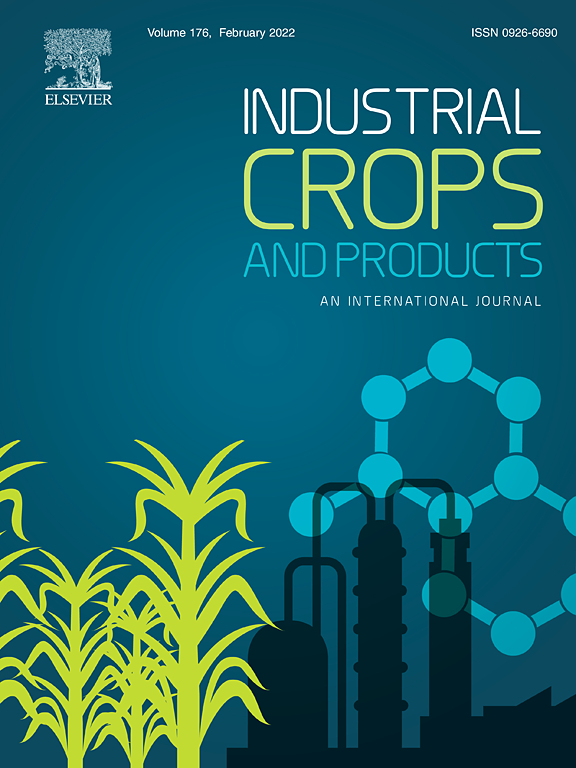Ver ítem
- xmlui.general.dspace_homeCentros Regionales y EEAsCentro Regional Tucumán - Santiago del EsteroEEA FamailláArtículos científicosxmlui.ArtifactBrowser.ItemViewer.trail
- Inicio
- Centros Regionales y EEAs
- Centro Regional Tucumán - Santiago del Estero
- EEA Famaillá
- Artículos científicos
- Ver ítem
Chemical and histological characterization of internodes of sugarcane and energy-cane hybrids throughout plant development
Resumen
Sugarcane and energy-cane are important Saccharum spp. hybrids that encompass desirable features for energy production. Their stem lignocellulose can be used as the raw material for the second-generation ethanol industry, contributing to accelerated fossil-fuel replacement. However, knowledge on the internode composition and saccharification of these hybrids is still needed to optimize their uses, especially in energy-cane. In this work, the agronomical,
[ver mas...]
Sugarcane and energy-cane are important Saccharum spp. hybrids that encompass desirable features for energy production. Their stem lignocellulose can be used as the raw material for the second-generation ethanol industry, contributing to accelerated fossil-fuel replacement. However, knowledge on the internode composition and saccharification of these hybrids is still needed to optimize their uses, especially in energy-cane. In this work, the agronomical, chemical, and histological internode features and saccharification potential were analyzed in sugarcane and energy-cane hybrids across four critical developmental stages (tillering, grand growth, early ripening and late ripening) and several internode positions along the stem. Except for galactose content that was higher in the sugarcane hybrid compared to the energy-cane, cell-wall composition was fairly similar in both types of cane across the growing cycle. Among main cell-wall components, maximum crystalline cellulose and matrix polysaccharides contents were observed at tillering and late ripening, respectively. Lignin concentrated towards upper internode positions and advanced developmental stages. Saccharification potential augmented towards apical internodes and early developmental stages, and negatively correlated to lignin and xylose contents. The energy-cane hybrid showed lower number of vascular bundles and metaxylem diameter and its lignin deposition was more extended towards the parenchymal tissue, when compared to the commercial sugarcane throughout the growth cycle. Taken together, these findings demonstrate that developmental stage and internode position largely affect cell-wall composition and its recalcitrance to enzymatic degradation. The use of sugarcane/energy-cane lignocellulose from early developmental stages could be beneficial for the second generation ethanol production. Novel management practices for that usage should consider economic, social and environmental sustainability standards under a sugar/ethanol production scheme.
[Cerrar]

Autor
Garcia, José María;
Molina, Catalina;
Simister, Rachael;
Taibo, Catalina Beatriz;
Setten, Lorena;
Erazzu, Luis Ernesto;
Gómez, Leonardo D.;
Acevedo, Alberto;
Fuente
Industrial Crops and Products 199 : 116739 (September 2023)
Fecha
2023-09
Editorial
Elsevier
ISSN
0926-6690
1872-633X
1872-633X
Documentos Relacionados
Formato
pdf
Tipo de documento
artículo
Proyectos
(ver más)
INTA/2019-PE-E6-I516-001/2019-PE-E6-I516-001/AR./Mejoramiento genético y desarrollo de ideotipos de cultivos industriales (CI) caña, maní, yerba, mandioca, stevia, quinua y te para sistemas productivos resilientes
Palabras Claves
Derechos de acceso
Restringido
 Excepto donde se diga explicitamente, este item se publica bajo la siguiente descripción: Creative Commons Attribution-NonCommercial-ShareAlike 2.5 Unported (CC BY-NC-SA 2.5)
Excepto donde se diga explicitamente, este item se publica bajo la siguiente descripción: Creative Commons Attribution-NonCommercial-ShareAlike 2.5 Unported (CC BY-NC-SA 2.5)


